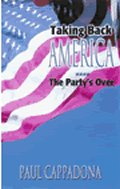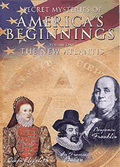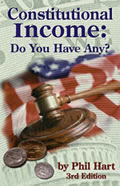OUR LUCKY FOUNDING FATHERS - THEY WERE HOME-SCHOOLED
By Joel Turtel
April 26, 2016
NewsWithViews.com
In ancient Greece and Rome, the education of children was voluntary and parent-directed. This two-thousand-year-old tradition came to America in the 1650s when colonists from England set up free-market schools in the Massachusetts Bay and Jamestown, Virginia colonies. The education system in each colony varied. There were many small, private non-religious grammar schools and colleges, Quaker and Lutheran schools, fundamentalist and liberal Protestant schools, schools that taught the classics, and technical schools that taught children a trade. It was a vibrant and voluntary free-market education system that catered to children's needs and abilities, and to parents' budgets.
Many towns had one-room schoolhouses that local residents or church members voluntarily paid for. Also, most colonial parents taught their children reading, arithmetic, and Bible studies at home. Throughout the thirteen colonies, parents controlled and paid for their children's education, and formal schooling in a town or church-sponsored school was voluntary.
Many children also learned a trade through apprenticeship, a respected tradition that had been around for hundreds of years. Parents often apprenticed their boys (girls mostly stayed at home) to a local tradesman or professional, like a clerk, blacksmith, or lawyer. The boy would work only for room and board, and the tradesman would teach the child his trade. George Washington learned his surveying skills as an apprentice. John Adams, our second president, apprenticed with a practicing lawyer in Boston. Apprenticing was a common way for an ambitious young man to learn a trade or profession in colonial times. Sadly, this unique and valuable learning method has almost disappeared today.
Benjamin Franklin, a brilliant writer, businessman, diplomat, and scientist, was a self-made man and mostly self-taught. Although Franklin's father was a candlemaker, he was intelligent and well-read. He taught Ben and his other children how to read, a skill that Ben quickly learned. Young Benjamin attended a local grammar school at age eight but stayed there hardly a year. His father sent him to another "writing and arithmetic" school, but Ben failed in arithmetic there. As a result, his father then removed him from this "formal" school, and at ten years old, Ben went to work for his father.
However, Benjamin didn't like the candle-making business, so his father introduced him to other trades to see if he liked any of them, which he didn't. At age twelve, Franklin's father apprenticed him to his older brother James, a printer in Boston. Unfortunately, Ben didn't get along with his brother, so at age sixteen Ben left Boston and walked to Philadelphia to seek his fortune. In Philadelphia, he eventually opened his own printing business and became successful.
Franklin loved books and read voraciously, studied arithmetic, and even taught himself French, all from books his father gave him. He read contemporary and near-contemporary authors, such as John Bunyan, Cotton Mather, and Daniel Defoe, as well as Plutarch and other classical writers that most college students today find difficult reading.
Franklin's education by poor but literate parents, as well as his later self-education, was not the exception at this time—it was the norm. George Washington went to sschool briefly at eleven years old. He didn't like school much—he preferred to spend his time dancing and horseback riding. His grammar school, where he learned geometry, trigonometry, and surveying, required young Washington to know how to read, write, and do basic arithmetic before it admitted him.
George attended school for exactly two years. During this time, he taught himself practical skills he could use when he started to work, such as how to write legal forms for commerce, including leases, patents, bills of exchange, and tobacco receipts. He also studied geography and astronomy on his own, and by eighteen years old had devoured novels by Henry Fielding, Tobias Smollett, Daniel Defoe, and classical Roman works like Seneca's Morals, Julius Caesar's Commentaries, and the Histories of Tacitus.
These are difficult books most college students today have never heard of, much less read. Years later, after serving as military commander-in-chief in the Revolutionary War, Washington became a self-taught architect and designed his magnificent home at Mount Vernon. Yet, many historians consider Washington the least well-read among the Founding Fathers.
Like most of the other Founding Fathers, including Samuel Adams, Thomas Jefferson, and James Madison, most average colonial Americans spent few years, if any, in formal grammar schools of the day, yet they knew how to read and write very well. Most local grammar schools expected parents to teach their children to read and write before they started school. Most colonial parents apparently had no trouble teaching their children these skills at home.
At least ten of our presidents were home-schooled. James Madison's mother taught him to read and write. John Quincy Adams was educated at home until he was twelve years old. At age fourteen, he entered Harvard. Abraham Lincoln, except for fifty weeks in a grammar school, learned at home from books he borrowed. He learned law by reading law books, and became an apprentice to a practicing lawyer in Illinois.
Other great Americans were similarly educated. John Rutledge, a chief justice of the Supreme Court, was taught at home by his father until he was eleven years old. Patrick Henry, one our great Founding Fathers and the governor of colonial Virginia, learned English grammar, the Bible, history, French, Latin, Greek, and the classics from his father.
Abigail Adams, Martha Washington, and Florence Nightingale were all taught at home by their mothers or fathers. John Jay was one of the authors of the Federalist Papers, a chief Justice of the Supreme Court, and a governor of New York. His mother taught him reading, grammar, and Latin before he was eight years old. John Marshall, our first Supreme Court Chief Justice, was home-schooled by his father until age fourteen. Robert E. Lee, Thomas "Stonewall" Jackson, George Patton, and Douglas MacArthur were also educated at home. Booker T. Washington, helped by his mother, taught himself to read by using Noah Webster's Blue Back Speller.
Thomas Edison's public school expelled him at age seven because his teacher thought he was feeble-minded. Edison, one of our greatest inventors, had only three months of formal schooling. After Thomas left school, his mother taught him the basics at home over the next three years. Under his mother's care and instruction, young Edison thrived. If Thomas Edison were alive today as that child of seven, school authorities would probably stick him in special-education classes and claim he had a mental 'disease' like ADHD. Poor Thomas would have wasted his brilliant mind and be bored to death until they released him from his public-school education prison at age sixteen.
Many of our greatest writers and artists, such as Mark Twain, Agatha Christie, Pearl S. Buck, Charles Dickens, and George Bernard Shaw, were also home-schooled or self-taught. Irving Berlin quit school in the second grade and taught himself to be a musician. Photographer Ansel Adams and architect Frank Lloyd Wright's parents taught them the basics at home. Joseph Pulitzer, the great newspaper publisher who created the Pulitzer Prize, was home-schooled.
This is only a partial list of great Americans who were home-schooled or never saw the inside of a public school. Most of the famous and accomplished Americans that children read about in their history books were either educated by their parents or mostly self-taught. These famous Americans' achievements prove that to succeed in life, a child does not have to attend a compulsory, government-controlled public school.
In contrast, the appallingly-low literacy rates of our children today is a direct result of the government take-over of our children's education since the 1890's. That is when government-controlled public-schools became compulsory for all children.
|
|
The obvious question to ask, is why not scrap our government-run public schools and go back to a totally free-market education system? Common sense tells us that a free-market education system would work superbly in America, just as it did for almost 150 years before government usurped our children's education.
Yet, today, government has increased its stranglehold over our children's minds, education, and future to a horrifying degree. Why have we let government bureaucrats get away with this? To answer that question in gruesome detail, I refer you to my book, "Public Schools, Public Menace."
© 2016 Joel Turtel - All Rights Reserved












 Share
This Article
Share
This Article



